Which one is better: olive oil or palm oil? In our heavy opinion, we prefer olive oil over palm oil for a multitude of reasons.
Considered healthier than palm oil, olive oil is rather effortless to find when making a quick stop at the local grocery store. Though palm oil is found in about 50% of products in local grocery stores, it can be difficult to find it as a sole product.
Palm oil is not only less nutritious than olive oil, but it is also tied to major controversial subjects. The palm oil industry plays a crucial role in the deforestation of rainforests that continues to lead to negative impacts on climate change due to a lack of sustainability efforts and corrupt social impact.
There is an array of information we recommend reading below to get a better feel for which option is better, palm oil or olive oil, to choose which option is best for you.
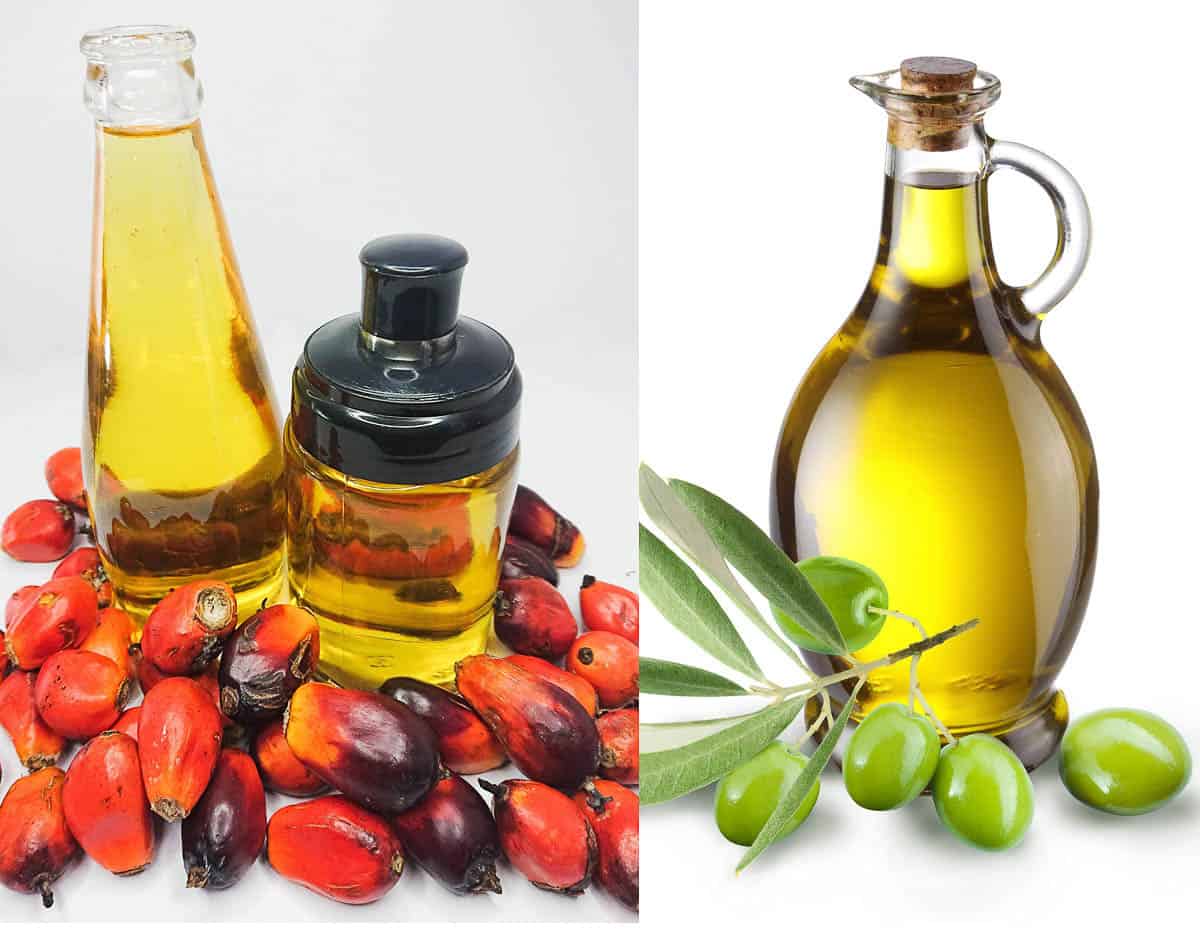
Jump to:
Olive Oil Information
What is Olive Oil?
A liquid fat cultivated from olives, olive oil is produced by pressing whole olives and extracting the oil that leaks out. Commonly used in Mediterranean foods, as olives come from a traditional tree crop of the Mediterranean Basin, olive oil can be found in foods, cosmetics, soaps, and fuels.
Health Benefits
Extra virgin olive oil is the more prestigious of olive oils, as it is made from only pure, cold-pressed olives. Regular olive oil is less healthy as it is made from a blend of processed and cold-pressed oils. You will find more health benefits with extra virgin olive oil as it is not processed and retains more antioxidants and vitamins, unlike other olive oil types.
Some benefits include:
- Rich In Antioxidants
- Promotes Cardiovascular Health
- Reduces The Risk Of Certain Cancers
- Supports Healthy Brain Function
- Fights Inflammation
- Boost Bone Health
- Supports The Immune System
- Balance Blood Sugar
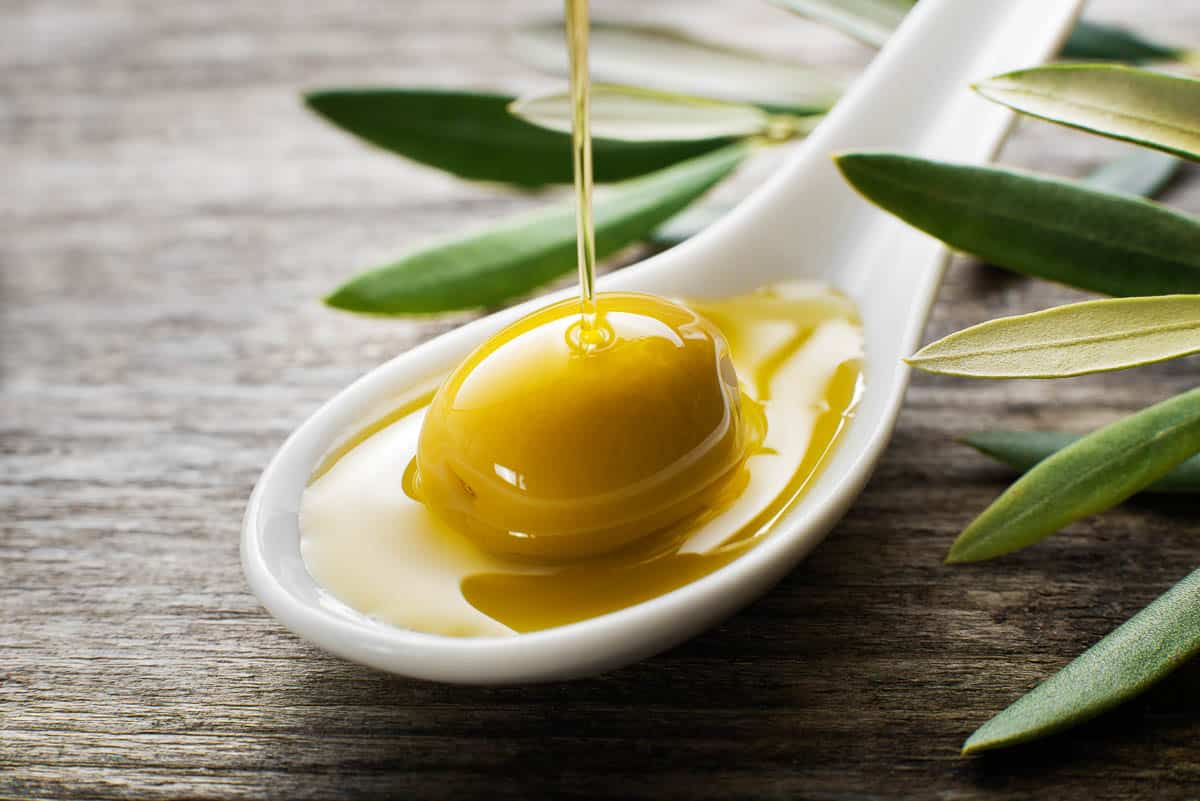
Cost Considerations
Compared to other common oils, like canola or vegetable oil, extra virgin olive oil can come across as an expensive oil. This is because there are strict gold standards that must be met in the process of making extra virgin olive oil.
Another factor that contributes to the price of extra virgin olive oil is the olives themselves. Olives are mainly grown in the Mediterranean, the biggest olive oil producer in the world, hence the added cost to import the olives before they are pressed to create an oil and sold at local grocery stores.
The average price of extra virgin olive oil lands between $15-$30, but for more “trending” brands, the cost can rise to fall between $37-$45.
Where Can You Find It?
Olive oil is available at most grocery stores and grocery store chains. It is not too common to find olive oil at a gas station convenience store, but some higher-end gas stations do provide olive oil, interestingly enough.
Recipes That Use Olive Oil
As olive oil has a mild flavor, there are more than a few recipes that call for olive oil specifically. From dips to baked goods, olive oil is frequently used in an array of dishes.
Here Are Some Common Recipes That Use Olive Oil:
- Hummus
- Bread Dipping Oil
- Roasted Eggplant
- Aioli
- Salad Dressing
- Basil Pesto
- Baked Goods (Like Brownies and Cakes)
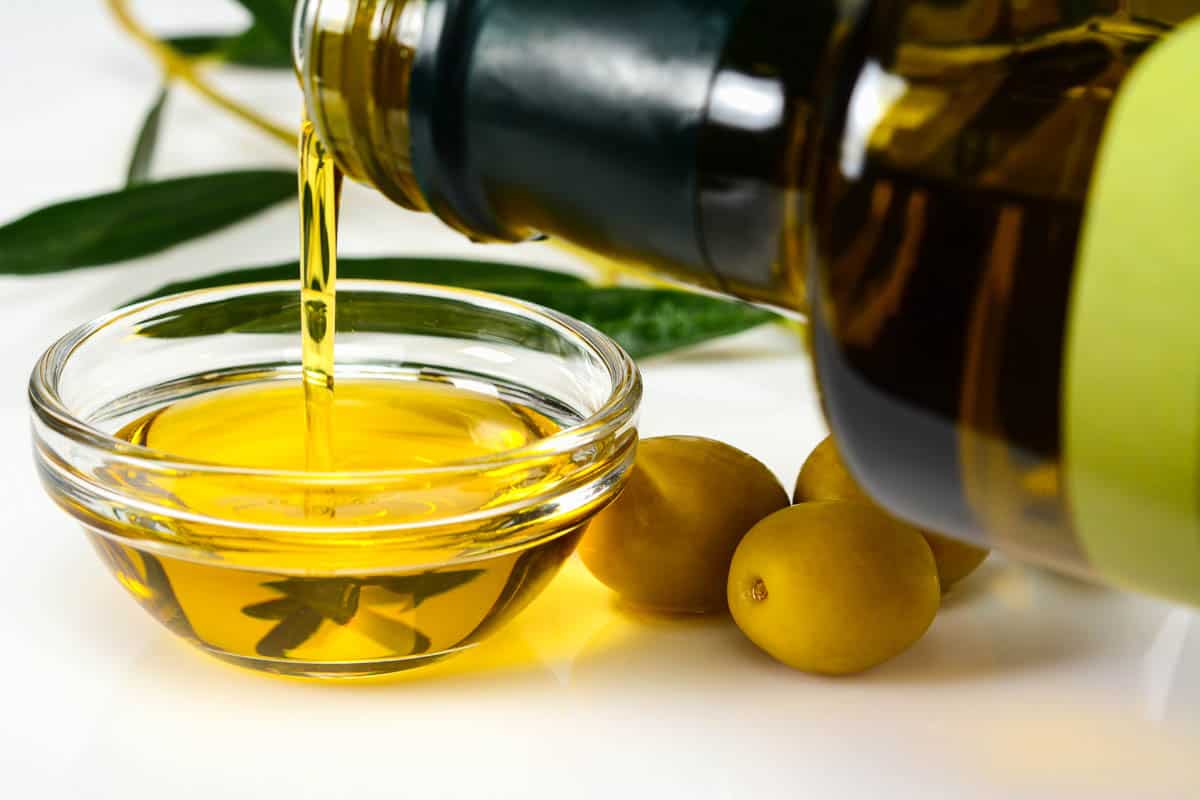
Palm Oil Information
What is Palm Oil?
Palm oil is more commonly derived from the fruit of the West African oil palm but it can come from the fruit of other specific palm species.
Two separate types of oil can come from the fruit of the oil palm trees. One is crude palm oil, which can be obtained from squeezing and juicing the fleshy fruit. The other is palm kernel oil, which is retrieved by crushing the stone, or kernel, found in the middle of the fruit.
Though oil palm trees were originally native to Africa, the trees were imported to South East Asia to become an ornamental tree crop over a century ago. Eventually, the oil palm trees became widely grown in Malaysia and Indonesia, which now make up over 85% of the global supply to produce oil from the oil palm trees. The cultivation of these oil palm trees is not limited to Indonesia and Malaysia though. There are around 42 other countries that take part in producing and supplying palm oil too.
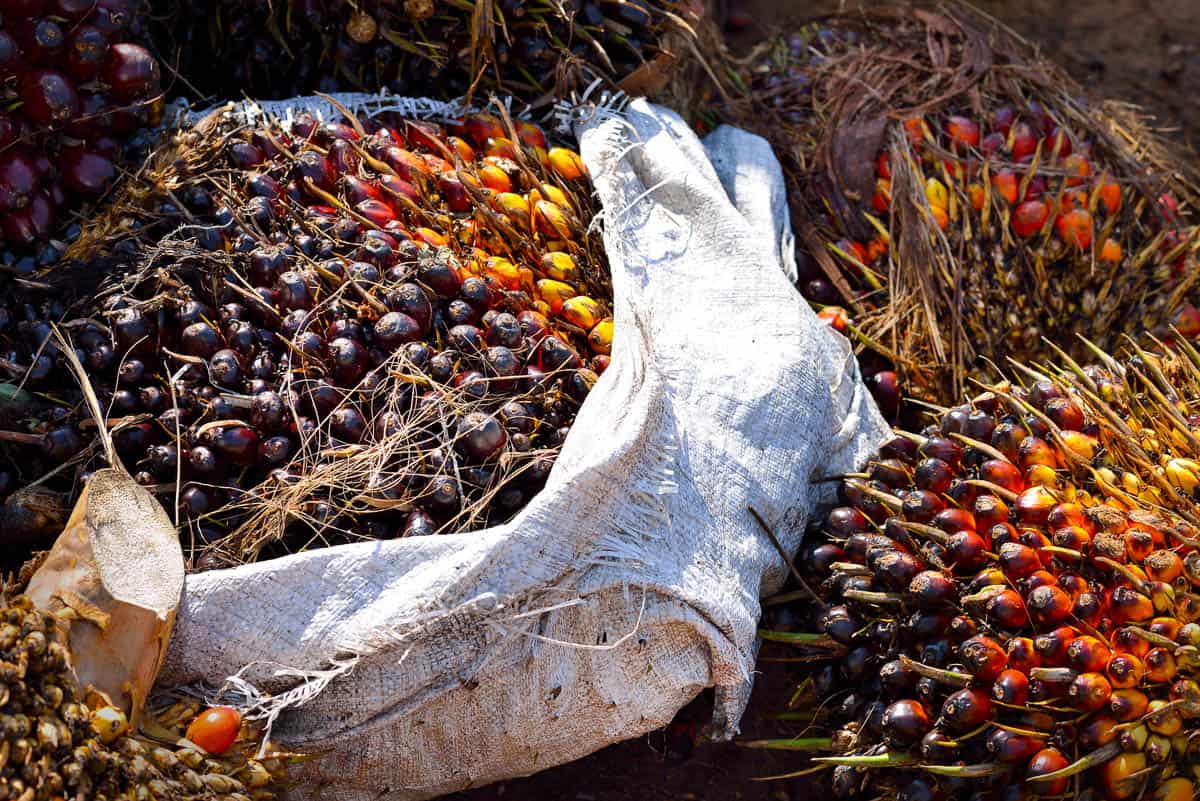
Health Benefits
In West African countries, like Nigeria, unrefined palm oil is more often used for cooking than refined palm oil. Unrefined palm oil often referred to as red palm oil, is a raw oil that comes directly from the palm plant. On the other hand, refined palm oil is achieved by putting the oil through a multitude of processing steps that provide the oil with its neutral flavor and color.
It is more typical to see refined palm oil be used in food manufacturing or when frying mass-produced foods. This processed oil is one of the reasons why palm oil is represented as the “bad oil”.
Health Benefits Of Palm Oil Include:
- High In Vitamin A
- Strengthens Brain Function
- Reduces The Risk Of Heart Disease
Cost Considerations
One of the main reasons why palm oil is used more than any other vegetable oil in the world is because commercial palm oil is cheap compared to other oils.
For the home cook, however, palm oil can be more expensive than olive oil. As an example, a 15 fl oz jar of Nutiva Unrefined Red Palm Oil can cost $8-10. The same volume of extra virgin olive oil will cost around $6.
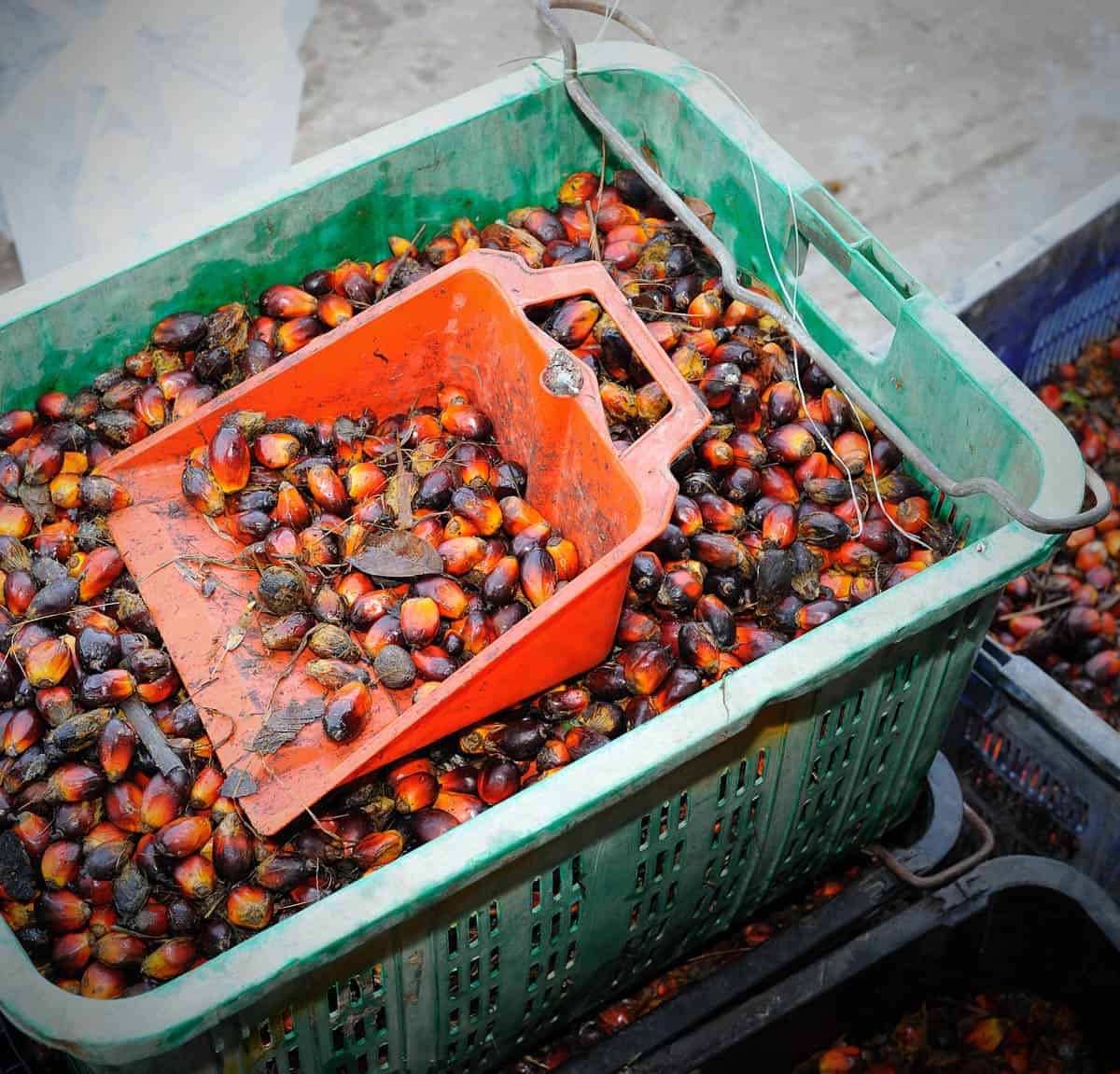
Where Can You Find It?
Palm oil is hard to find as a product in grocery stores. You will have more luck finding palm oil in a health food store or by checking with your local grocery stores to verify that they hold the product in-store. Ordering online is most likely the easiest option.
Recipes That Use Palm Oil
Palm oil is used in many mass-produced foods, like chips. This oil is more commonly used when manufacturing mass-produced food items than you would find in most freshly made foods, at least in the United States. In West African communities, unrefined palm oil is often used in traditional West African cuisine.
Common Commercial Products That Use Palm Oil:
- Instant Noodles
- Pizza Dough
- Cookies
- Chocolate
- Biscuits
- Packaged Bread
- Packaged Pastries
The home cook can use organic unrefined red palm oil in a variety of recipes.
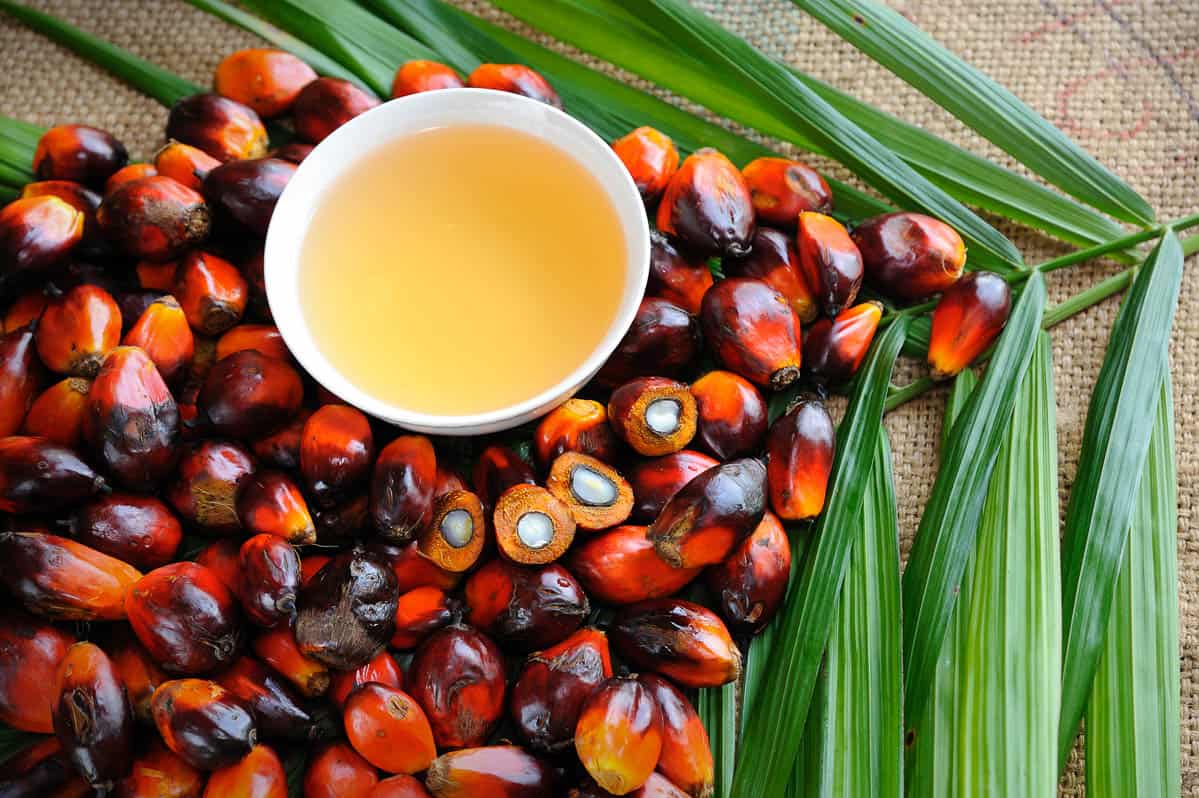
Olive Oil: Pros & Cons
Pros
- Easy To Find
- Functional In Many Recipes
- Lowers Risk Of Cardiovascular Disease
- Rich In Antioxidants
- Smoke Point Lies Between 374°F-405°F
Cons
- Over-Consumption Can Cause Major Drops In Blood Pressure
- High In Calories
- Can Contribute To Obesity
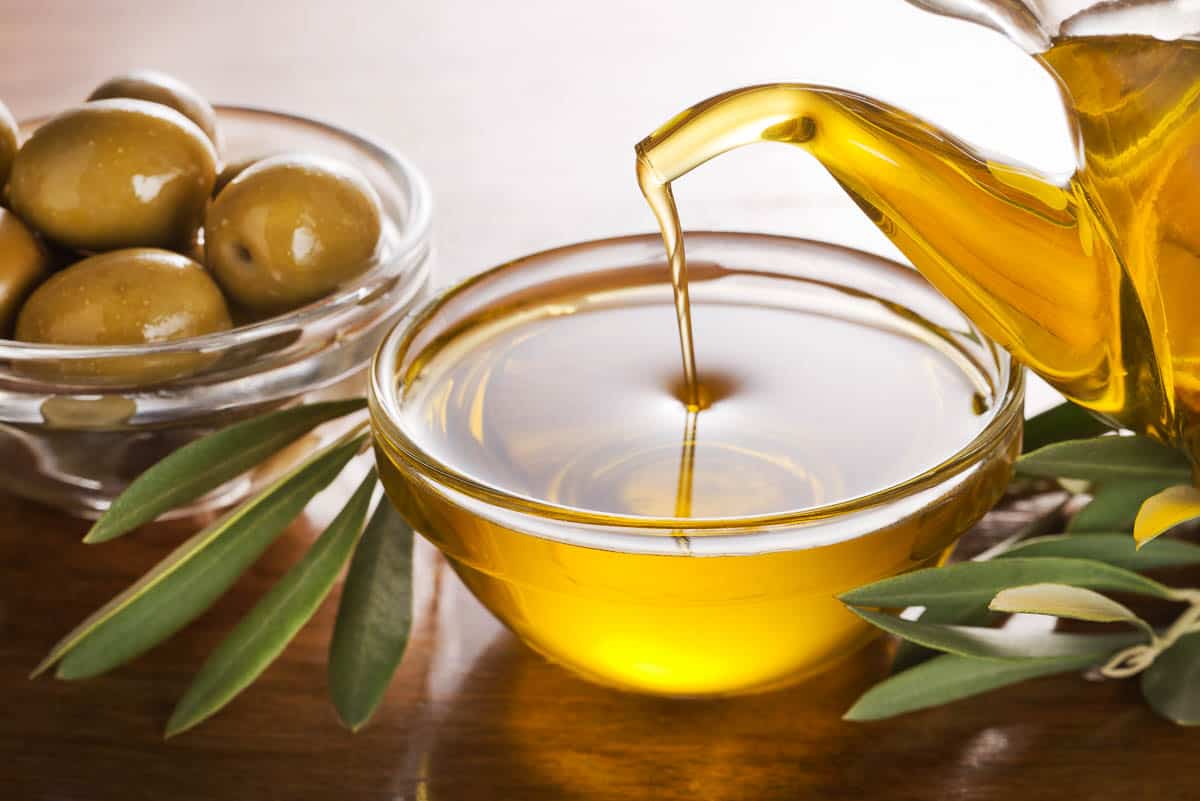
Palm Oil: Pros & Cons
Pros
- Commercially cheaper Than Most Vegetable Oils
- Has A High Smoking Point (Used For Frying Foods)
- Rich In Nutrients
- Sustainable Palm Oil Options
Cons
- Contributes To Major Deforestation Issues That Affect Endangered Species Such As Orangutans, Tigers, Elephants, And Rhinos
- Negative Climate Impact (Replace Rainforests With Carbon-Releasing Oil Palm Plantations)
- Negative Social Impacts From Corruption, Land-Grabbing, And Forced Evictions
- Hard To Find At Grocery Stores
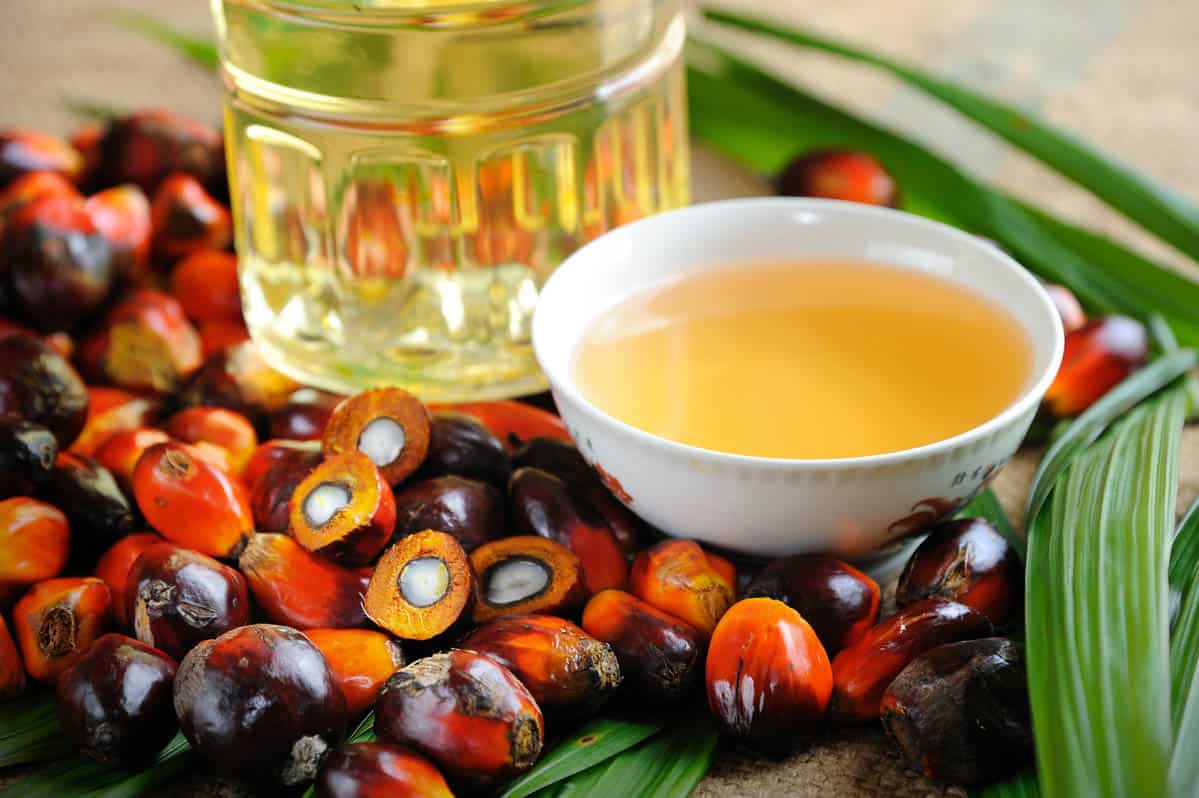
Which Oil Is The Healthiest?
When comparing olive oil and palm oil, olive oil is by far the healthiest. Olive oil offers more nutritional compounds, has an accessible unprocessed version that is healthier and easy to find, and has a less controversial impact on the environment.
As palm oil is more often used in food manufacturing for mass-produced food items like chips and butter, it is more commonly used in processed foods that are considered “unhealthy”. It is safe to say that the companies that use palm oil use a more processed version as it is cheaper than pure, unprocessed palm oil. In fact, it is believed that about 50% of supermarket products contain palm oil, ranging from cosmetic products to food products.
Palm Oil Vs. Olive Oil
Olive oil wins our hearts over palm oil.
A healthier option, olive oil contains monounsaturated fats and polyunsaturated fats that improve “good” cholesterol levels. This is unlike palm oil which is filled with saturated fats that spike “bad” cholesterol. Olive oil beats palm oil out as the healthier oil of the two as it contains more antioxidants and nutrients than palm oil does.
As olive oil has a lower smoke point than palm oil which can sustain high temperatures when cooking. We recommend using sunflower oil over canola oil or olive oil as an alternative to palm oil in cooking at the higher temperatures needed in frying recipes. Sunflower oil matches palm oil with a smoke point of 450°F, making it a great alternative.
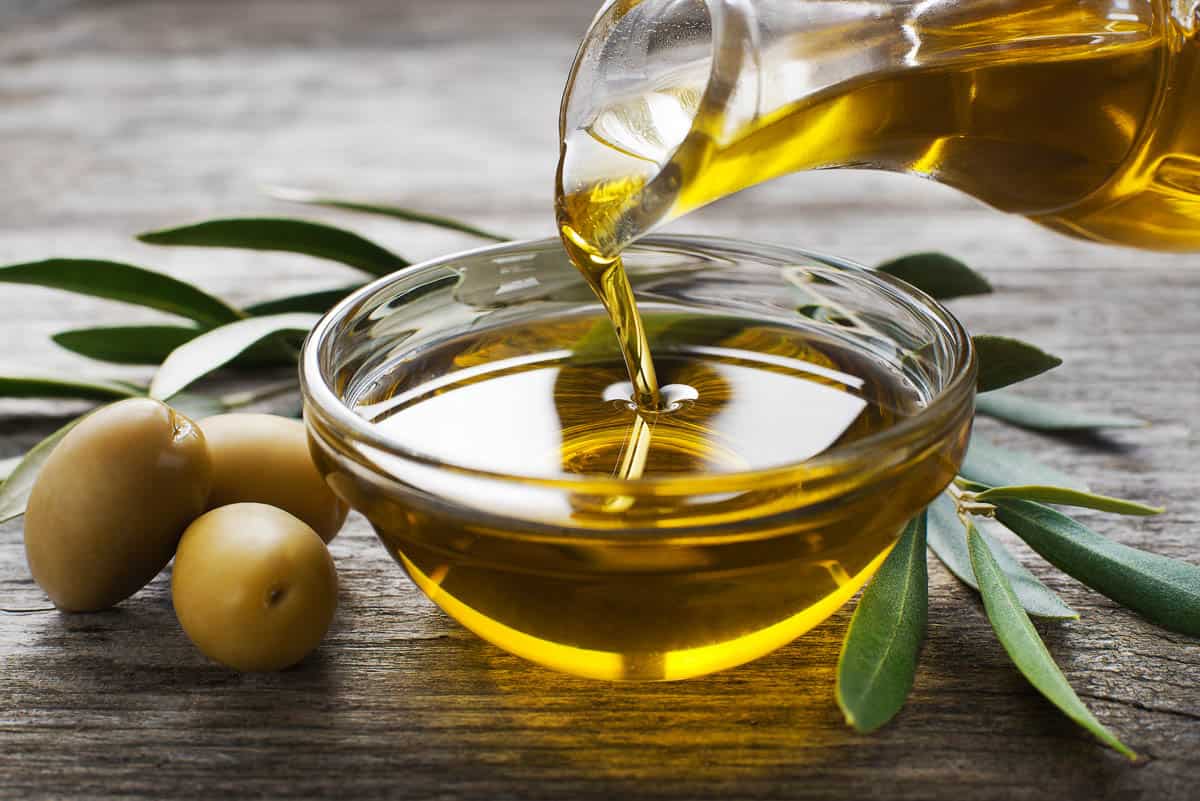
Other Oil Options
Avocado Oil
With a smoke point of 520°F, avocado oil is incredibly popular as a plant-based cooking oil. Pressed from the avocado fruit, avocado oil holds a mild buttery taste that makes it a fantastic option for an array of dishes ranging from sautés to baked goods.
Great for heart health, avocado oil reduces the risk of heart attacks. Filled with monounsaturated fatty acids, avocado oil is considered one of the healthiest oils. It is high in an unsaturated fat called oleic acid, contains large amounts of vitamin E, and has been linked to reducing LDL cholesterol while increasing HDL cholesterol.
Sunflower Oil
Pressed from sunflower seeds, sunflower oil is considered a non-volatile oil that is commonly used to fry foods. With a smoking point of 450°F, sunflower oil is the go-to oil for searing salmon and sautéing vegetables. Though sunflower oil does contain nutritional benefits, research has suggested that when sunflower oil is exposed to high heat for extended periods of time it can emit toxic aldehyde fumes.
Coconut Oil
Boasting nutrients that promote a healthy diet, coconut oil has made a huge come-up in recent years. From improving cognitive function and skin health, coconut oil is frequently used not only in recipes but in cosmetic products.
The smoke point of coconut oil reaches 350°F. With its slight coconut flavor and lower smoking point, coconut oil should be more often used for stir-fries or pan-frying recipes.
Flaxseed Oil
Made from pressing ground flaxseeds, flaxseed oil comes with incredible benefits like lowering inflammation and reducing the risk of cancer. The smoking point of flaxseed oil only reaches 225°, so it is safer to use this oil for salad dressing, smoothies, or drizzling onto dishes for added flavor.
The usage of flaxseed oil can be a pleasingly multi-purpose oil option. Whether for cooking recipes, adding it to smoothies for a nutritional boost, or applying it to skin or hair for a much-needed refresher, flaxseed oil is a powerful oil to consider.
Grapeseed Oil
Processed from grape seeds, a byproduct of wine-making, grapeseed oil is higher in vitamin E than any other oil, even olive oil. With a smoke point of 420°, grapeseed oil is a favorite cooking oil used by restaurant chefs due to its versatile taste and high smoke point. Oftentimes, grapeseed oil is used in vinaigrettes as grapeseed oil is less expensive than olive oil.
Sesame Oil
A popular product used in Asian cuisine, sesame oil is made from pressing sesame seeds. Though olive oil and sesame oil run head to toe in nutrition content, olive oil barely wins the battle. Sesame oil is rich in nutrients and is full of powerful antioxidants like vitamin E and phytosterols.
The high smoke point of sesame oil reaches 410°. With sesame oil’s unique flavor, it makes for a great cooking tool in roasts, dressings, and stir fries.
Walnut Oil
Full and rich in antioxidants, walnut oil has the ability to lower blood sugar levels to reduce the risk of diabetes. Pressed from walnuts, walnut oil has a golden-brown coloring with a sweet, nutty flavor.
As the smoke point of walnut oil only reaches 320°, walnut oil is not often used to cook foods on high heat. Instead, walnut oil can more efficiently be used in salad dressings, condiments, or drizzled over roasted fish.
Peanut Oil
With a light and neutral flavor, peanut oil is made from the seed of the peanut plant. Often used to make medicine, peanut oil is also frequently used in cooking. A healthy cooking oil, peanut oil lowers cholesterol, prevents heart disease, is low in saturated fat, and is high in monounsaturated fat.
The slightly nutty flavor of peanut oil makes for a fun, tasty addition to sautés and fried foods.
Canola Oil
Made from pressing crushed canola seeds, canola oil is another controversial cooking oil. Canola oil is not an efficient source of nutrients like olive oil or sesame oil. As it contains small amounts of trans fat, which is harmful to one’s health, canola oil is not a recommended oil. Disturbingly enough, canola oil can be discovered as an ingredient in many products found in the aisles of your local grocery store.
Canola oil, like palm oil, has a high smoke point. At 400°F, canola oil is often used to fry foods and as it runs cheaper than most oils, it’s no wonder canola oil is used for manufacturing in mass-produced foods.
Vegetable Oil
Vegetable oil is any mixture of oils that come from vegetables. This can refer to safflower, palm, corn, canola, sunflower, or soybean oils. As many of the vegetable oils listed aren’t the healthiest or may be controversial, like palm oil, we will always recommend oils like olive oil, sesame oil, or avocado oil over vegetable oil.
Do you have any other tried and true substitution recommendations? Please let me know in the comments!


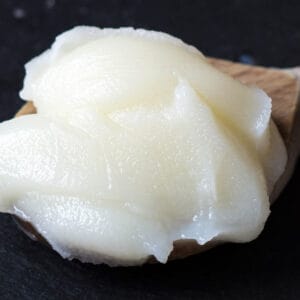

Leave a Reply